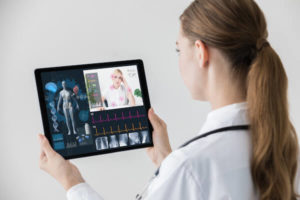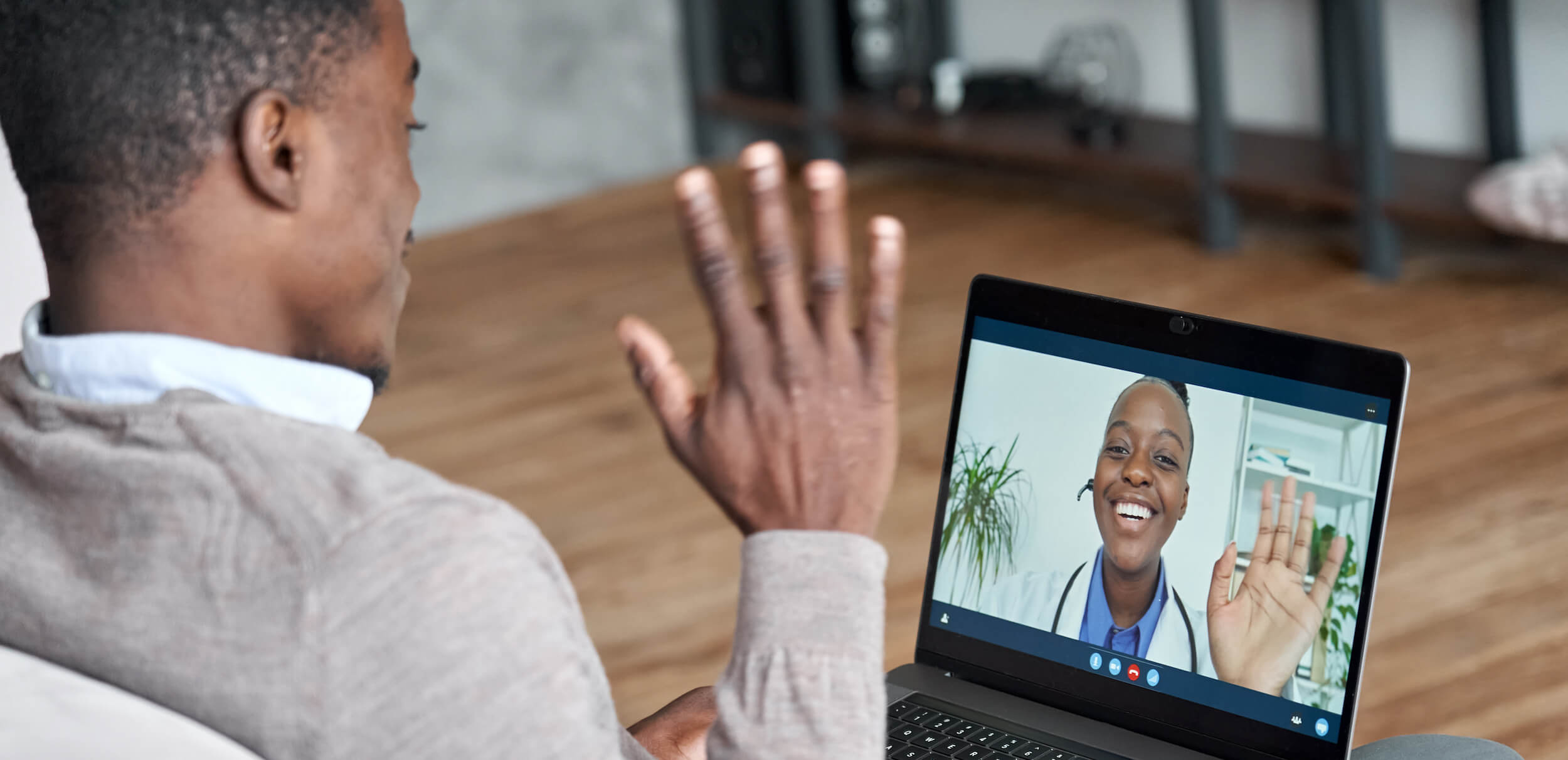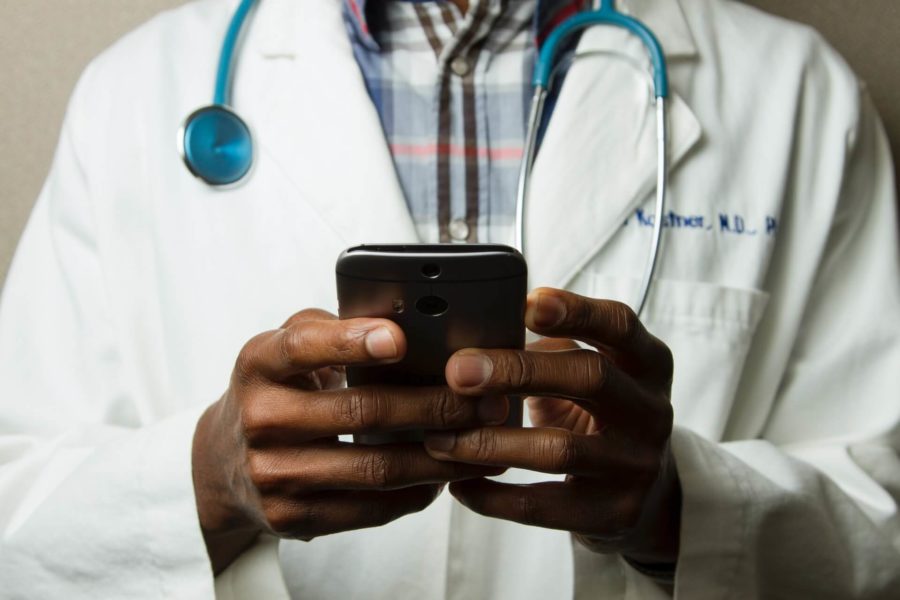Face analysis in healthcare could be just what providers need in the next phase of patient-centered care.
 Once upon a time, doctors making house calls when someone was sick was the norm. We often think of those times as the pinnacle of bedside manner, a period when doctors knew their patients and patients felt truly cared for. Now, healthcare practitioners can once again offer house calls, this time with the assistance of artificial intelligence (AI) and telemedicine appointments.
Once upon a time, doctors making house calls when someone was sick was the norm. We often think of those times as the pinnacle of bedside manner, a period when doctors knew their patients and patients felt truly cared for. Now, healthcare practitioners can once again offer house calls, this time with the assistance of artificial intelligence (AI) and telemedicine appointments.
While telemedicine is not the solution for all medical needs, the surge of telehealth choices in the marketplace clearly suggests that we miss those times when our doctors came to us. Telehealth appointments offer patients context and personalization previously only possible with in-person appointments. Medical providers are able to meet, and even exceed, previous levels of service by utilizing face analysis in healthcare.
Bedside Manner Matters—How Do You Keep It in Telehealth?
 COVID may have accelerated the adoption of telehealth and telemedicine appointments, but all signs were pointing in that direction anyway. COVID or not, telehealth will only become more common, allowing healthcare providers to reach their patients where it’s convenient for them. But as beneficial as telehealth appointments can be, they can make it more difficult for healthcare professionals to connect with patients.
COVID may have accelerated the adoption of telehealth and telemedicine appointments, but all signs were pointing in that direction anyway. COVID or not, telehealth will only become more common, allowing healthcare providers to reach their patients where it’s convenient for them. But as beneficial as telehealth appointments can be, they can make it more difficult for healthcare professionals to connect with patients.
Since it seems that telehealth is here to stay, the way doctors connect with patients and make diagnoses has to evolve. Face analysis can help solve this challenge by providing a resource for healthcare practitioners to better understand their patients even without in-person visits.
Face Analysis in Healthcare: What Can It Bring to Telehealth Appointments?
Face analysis is helping bridge the gap to enable telehealth to become the evolution of the house call. Here are things that face analysis brings to the table:
- Personalization: Face analysis can understand even the tiny signs in a patient’s overall facial expressions. This type of analysis gives healthcare providers deeper insight into the
patient’s emotional state, comprehension, and signs of distraction that can alert the doctor to more clearly communicate with their patient or to consider the possibility of deeper health issues. - Live vitals: It can also help monitor vitals during the health appointment and send notifications in real-time when something changes rather than doctors just receiving a static reading upon intake. With face analysis tools doctors can easily monitor for fluctuations in vitals throughout the course of an
 appointment and act appropriately.
appointment and act appropriately. - Responsive monitoring: Healthcare providers rely heavily on their expertise to pinpoint the signals that can indicate changes in health, new symptoms, or drug reactions. Face analysis in healthcare can support this expertise by monitoring patients for facial cues as varied as dilated pupils, dry skin, mottling, or circles around their eyes without the doctor having to be in the same room with the patient.
The challenge of telehealth appointments is to keep the human factor present while also offering a high level of care. Face analysis offers doctors this opportunity to enhance patient care and provide a better telehealth experience.
Face Analysis in Healthcare: The Evolution of the House Call
 Telehealth virtually brings patients right into their doctors’ offices, but it also brings doctors into their patients’ homes. Healthcare providers have an opportunity to offer the type of experience patients desire and/or need, and face analysis can help ensure that telehealth delivers the quality of care patients require.
Telehealth virtually brings patients right into their doctors’ offices, but it also brings doctors into their patients’ homes. Healthcare providers have an opportunity to offer the type of experience patients desire and/or need, and face analysis can help ensure that telehealth delivers the quality of care patients require.
Healthcare facilities need quality infrastructure, efficiency, healthcare provider competence, and ongoing training in new methods and treatments to improve patient outcomes. Underpinning all these facts however is an unwavering commitment to patient-centered care. Using modern “augmented intelligence” tools such as face analysis, doctors can spot the subtle signs that can mean the difference between another frustrating appointment and a great one.
Bringing Face Analysis to Healthcare Safely and Respectfully
Face analysis is not the same as face recognition. Healthcare facilities can leverage computer vision and AI for a deeper understanding of patients without violating their privacy. Face analysis does not recognize identity, only facial cues that indicate attributes such as emotion, distraction, or pain.
AlgoFace has designed a technology that leverages the power of face analysis while reducing the risk to the individual—FaceTrace. It uses Identity-Free Biometrics to evaluate facial features without compromising end user privacy. The system is trained on a diverse and inclusive dataset and operates on the edge for real-time responses.
It’s time to bring an updated and improved “house call” to 21st-century patients. Contact us for your demo to see just how dynamic telehealth appointments can be when using technology powered by FaceTrace.



